What’s your Nature Connexion?
Nature Sounds From the Amazon Rainforest
Podcast: Play in new window | Download

What’s your Nature Connexion?
Nature Sounds From the Amazon Rainforest
Podcast: Play in new window | Download

The Andes
The Andes Mountain Range, it’s the youngest mountains chain the world. It enjoys an amazing diversity of life.
Podcast: Play in new window | Download

The Amazon Rainforest is the most biodiverse place on Earth. Millions of voices speak up everyday. Let’s listen to what they say!
Podcast: Play in new window | Download
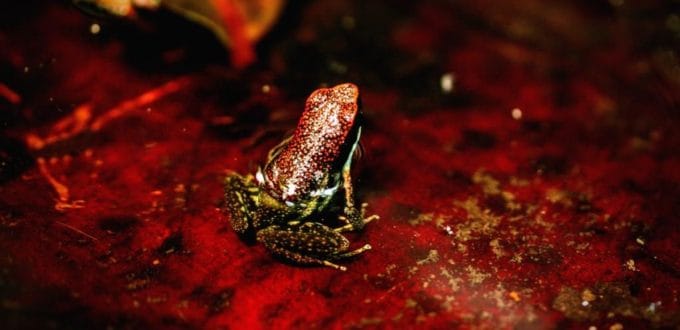
We invite you to check in the fascinating world of the Frogs of the Amazon Rainforest in Ecuador
Until three decades ago, the site considered as the most diverse in the world in amphibians and reptiles was the town of Santa Cecilia, The studies while the forest was being deforested and the soil moved with excavators in 1978. in Sucumbíos, Ecuador.
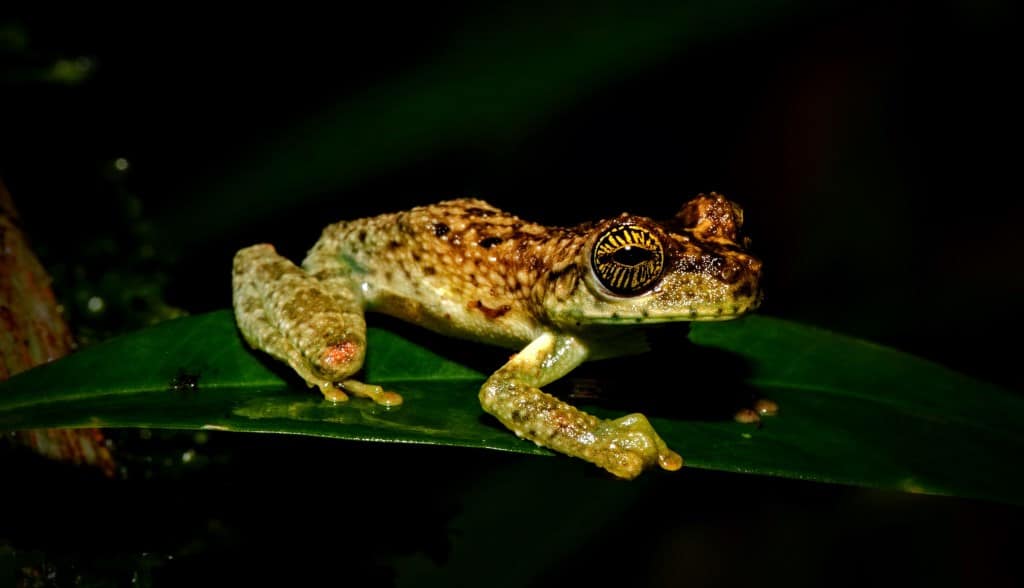
In a closer region with high species richness, Leticia in the Amazon Colombia reported 98 species of anurans species.
Another remote region with high species richness reported 111 species of amphibians for the Manú National Park in Peru.
The next area with an exceptional diversity of amphibians in the Yasuní National Biosphere, where more than 130 species of amphibians have been recorded in a single locality.
Upon seeing all these comparisons, the high richness of amphibian, as well as the extreme concentration of diversity in a small area, clearly indicates the importance of the Yasuní, it is mandatory to conserve one of the richest herpetofauna communities in the entire world.
There are many species frogs that remain to be described for science, we know little or nothing about their natural history of Amazonian amphibians, their state of conservation and risk of extinction in the face of factors such as the destruction of habitats or climate changes at local, regional and global scales
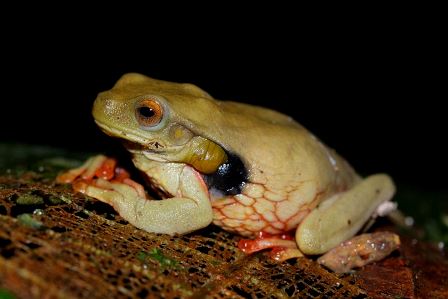
The local diversity (alpha diversity) of amphibians in Ecuador reaches its highest value in the Tropical Amazonian Humid Forest.
The endemism in the Amazon Tropical Rainforest in Ecuador rach only 15.9 %.
The greatest species richness is concentrated in the Amazonian provinces: Napo, Sucumbíos, and Pastaza. Notably, the diversity of the province of Napo (199 species) surpasses that of entire countries such as Argentina or Canada.
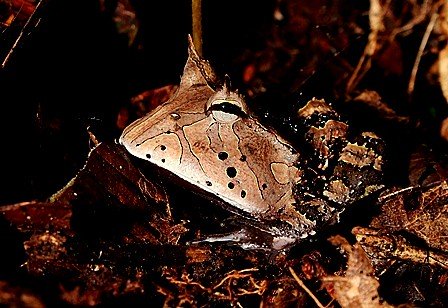
About 19 amphibian species that were unknown to science up to that time. Ten of these species have been described in recent years based on specimens collected in Ecuador
Still, there are to describe at least three species of the genus of toads Rhinella, a Boana tree frog, at least two species of cutin frogs Pristimantis.
Nine species were reported for Ecuadorian Amazon Rainforest, including frogs like:
Besides, very rare records for the country, such as the Gastrotheca longipes, Dendropsophus miyatai, Cochranella resplendens.
In comparison with other Amazonian sites very diversified and well sampled, the anuran species richness of Ecuador It is greater in all cases.
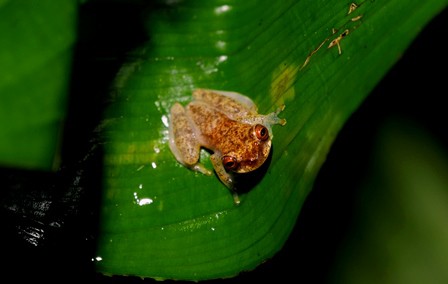
Anywhere in the Rainforest, eventually you will cross with a frog but if you are trying to find them as soon as you arrive. First, get your bearings right, let know others where are you heading.
Family: Hylidae, Treefrogs
Join Our next Amazon Expedition during Our Ecuador Herping Trip
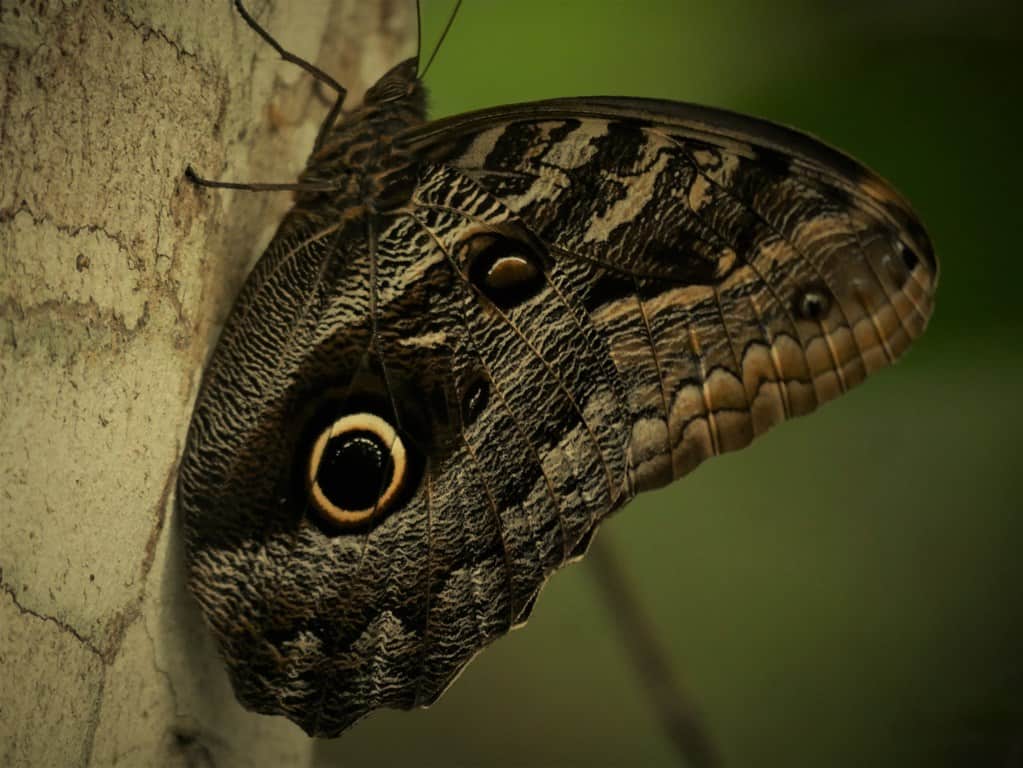
The Butterflies of the Amazon Rainforest in Ecuador are definitely one of the easy animals we find during our experience in the Amazon Rainforest.
The Butterflies in the Amazon Rainforest are active all year round, all different species living in different niches and habitats throughout the forest.
They go under metamorphosis: starting from a resting egg, usually laid next to their host plant; later hutch into a larva or into an eating machine that keeps stretching; later internal changes go wild at the protein level to finally emerge as a new adult butterfly.
We can find them from early in the morning: the Butterflies of the Amazon Rainforest are active and ready to go!
We will locate them inside the forest whether resting on a leaf or taking gentle samplings of bird poop or sipping into ripe fruits -the rotten ones are the best!- fallen from the canopy as a leftover from canopy wildlife.
We will find them everywhere in the forest.
The coloration of the Butterflies in the Amazon Rainforest is an important survival feature, the position of the scales in the wings can be found in all the color combinations possible, a remarkable adaptation to establish in all the forest niches.
The clouds of Butterflies are often seen on the canoe rides along the Shiripuno River, another colorful experience, all of them end up coming to the Amazonian River sandbars and scouting for mineral accumulations left behind by other wildlife such as capybaras, birds, or reptiles.
We can see them from the canoe when feeding along the sandbars of the Shiripuno River, sometimes in large and colorful groups flying over the river.
The most famous Butterfly of the Amazon Rainforest is the impressively sized Blue Morphos, named after Morpheus the Greek God for the Dream. This huge butterfly it’s easy to be recognized by the huge splash of electric blue you will see in the forest.
We would like to nominate all the Butterflies of the Amazon Rainforest Butterflies as “Honorary Vertebrates”.
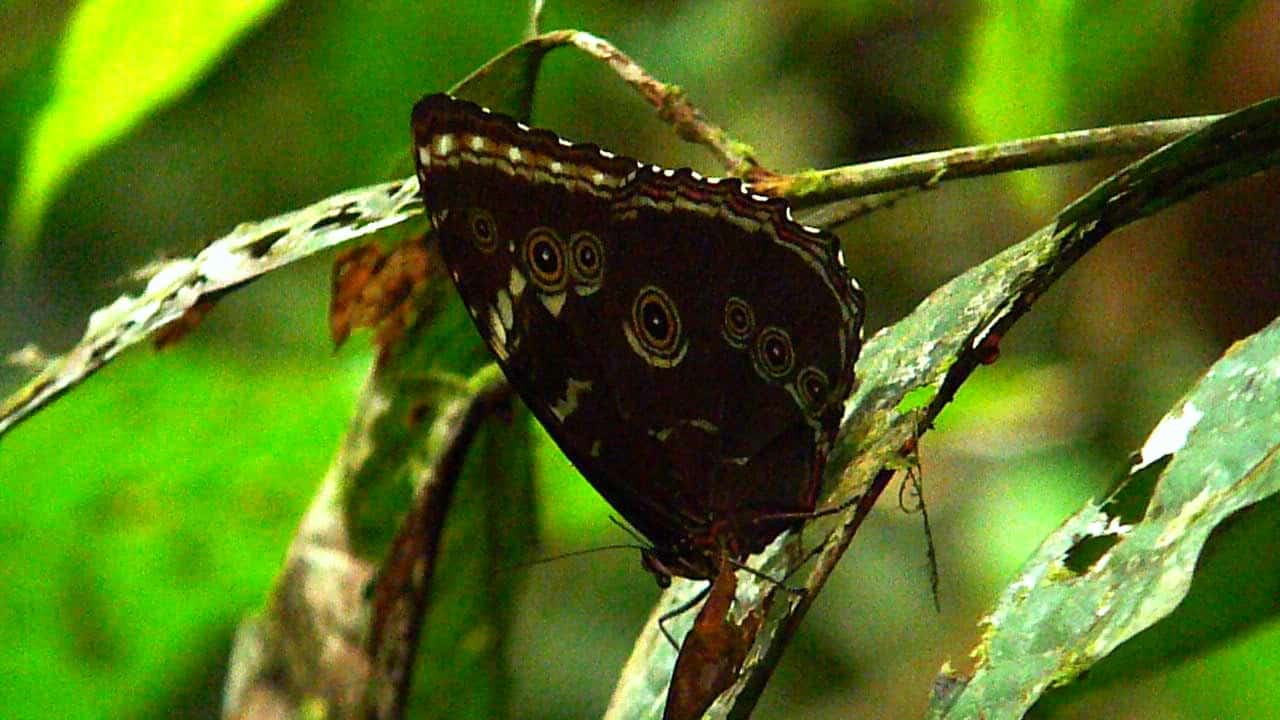
The Blue Morpho belongs to the genus Morpho, which is a huge butterfly with a flash of electric blue you will see on our boat trip, or during hikes on trails, the Blue Morpho with a wingspan of about 4 inches long.
Their wings express the Best Technology in nature to reflect light with energy efficiency.
They feed on falling rotting fruit on the ground it can be in front of you, and you won’t see it, because it eats with its wing close to melting in the background color of the floors.
The Blue Morpho caterpillars defend themselves with a defensive smell.

The Amazon Owl Butterflies belong to the genus Caligo, a huge brown butterfly, active at crepuscular times of the day, they are known for their huge eyespots on their hindwing, which resemble owls’ eyes.
During adulthood, it feeds on rotting fruits, and in the larvae stage, they feed on the Heliconias plant. They are found in all the habitats of the Amazon Rainforests in Ecuador.
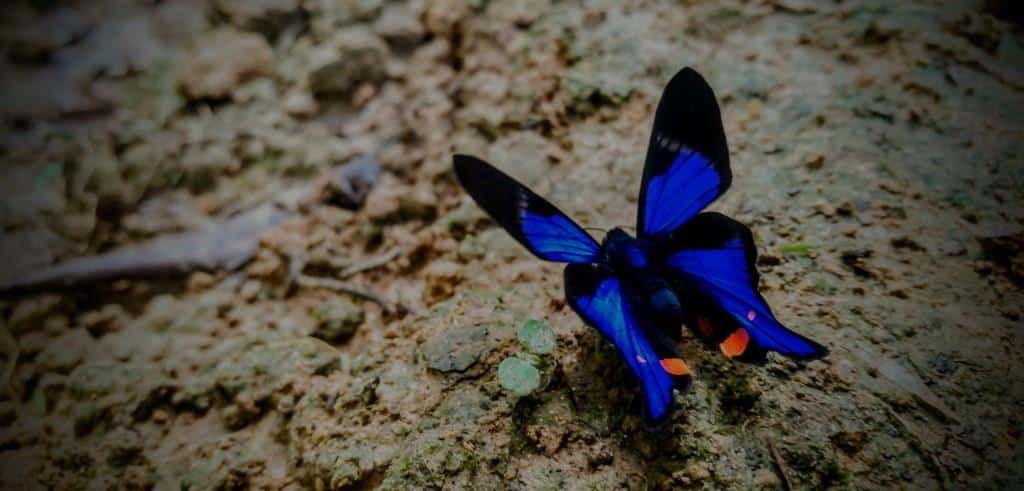
Rhetus butterflies are usually found singly or in very low numbers, in the vicinity of streams or rivers.
Thirsty for Minerals! It can also be found along tracks through the primary or disturbed rainforest or cloudforest habitats.
The butterfly occurs at elevations between 0-1800m and flies throughout the year.
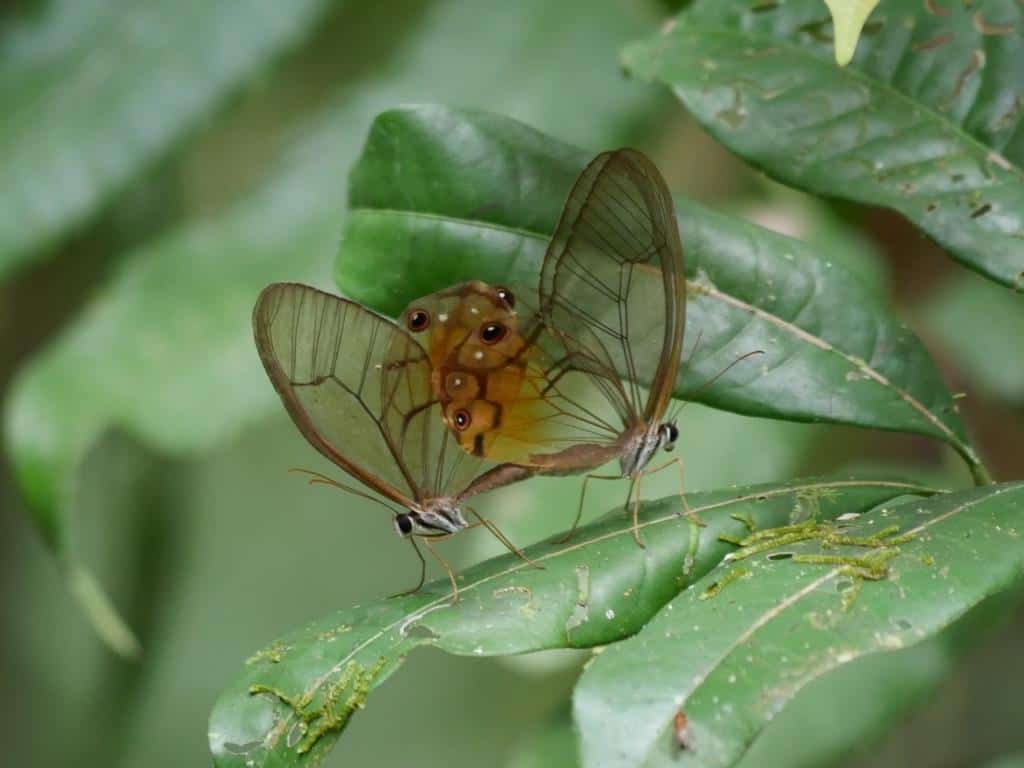
The Haetera Piera Butterfly is a glass-winged butterfly. Almost nothing is known about the caterpillar stages of this butterfly and little is known about the whole butterfly tribe this species belongs to, the Haeterini.
The butterflies fly close to the ground and are widespread across South America’s lowland forests. They have a subtle coloration over their transparent wings, which are each patterned with two eye spots.
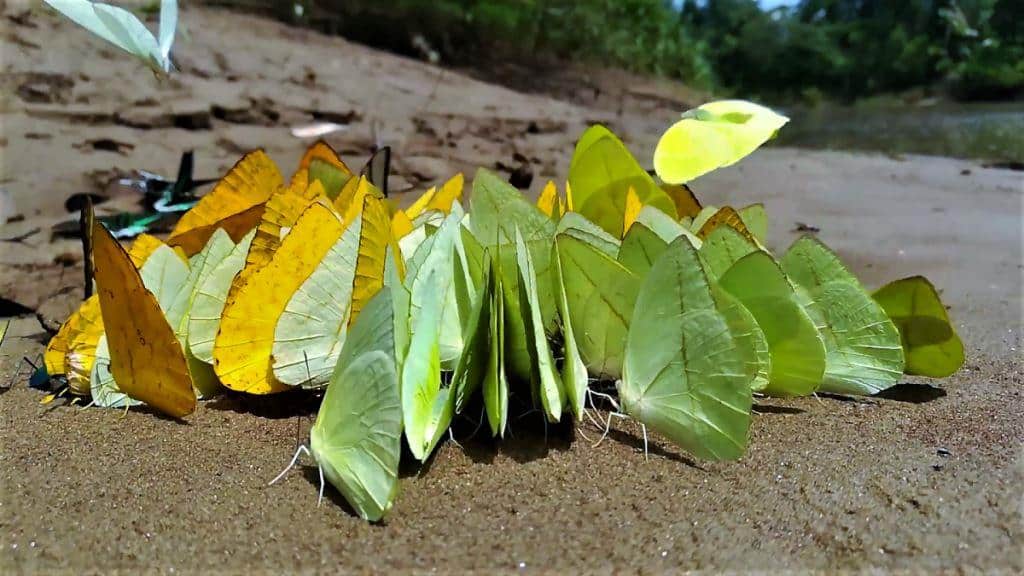
Sulfur butterflies, known as pierids as they’re in the Pieridae family, are often seen around puddles of water and include around 70 different species throughout the Neotropics.
The butterflies aren’t just after water but important minerals like sodium.
A favorite photograph for Amazon Rainforest tourists to capture, you can sometimes see butterflies drinking from the eyes of aquatic reptiles like turtles and caiman.
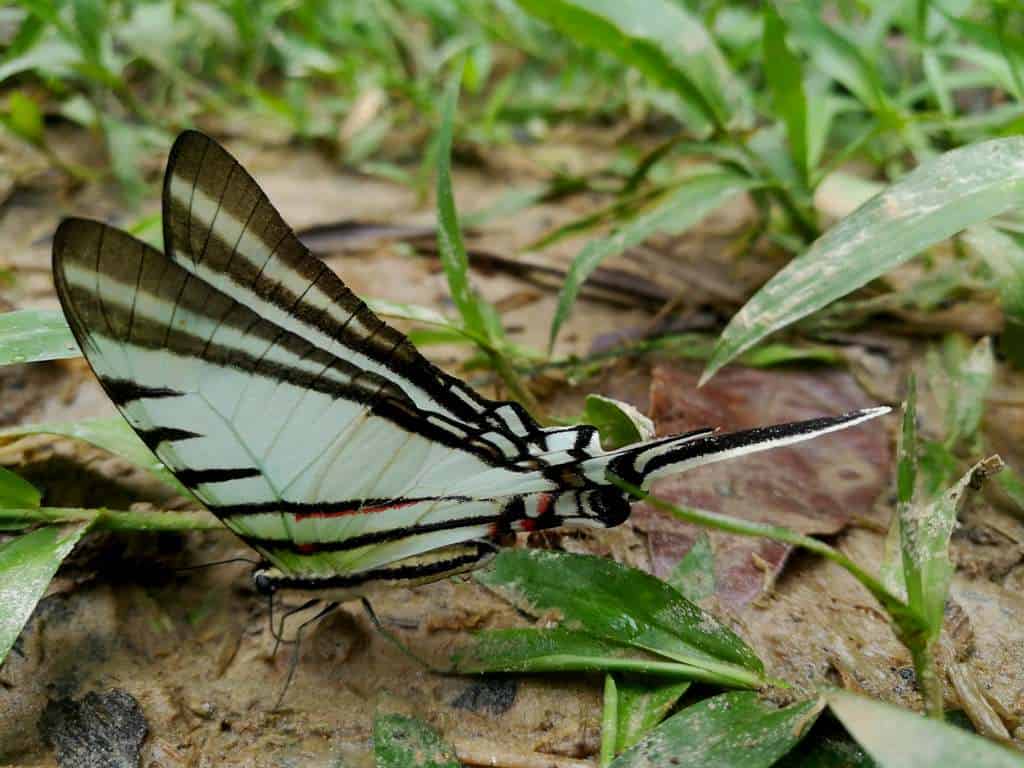
Safety in Numbers
These are kite swallowtails in the Eurytides genus that often join sulfur butterflies as they do their puddling behavior.
They too drink the water to obtain different minerals and can be distinguished from the sulfurs by their tails and black markings.
It’s safer for butterflies to drink in groups as they benefit from safety in numbers.
If a predator attacks these highly conspicuous animals, a single butterfly in a group is less likely to be eaten than if drinking alone.
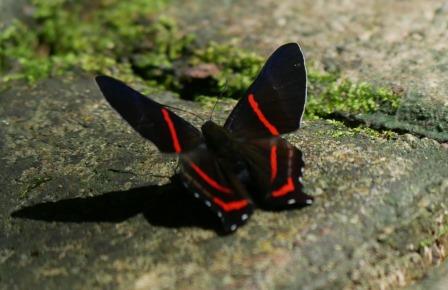
You can go Butterfly Watching in Ecuador in any direction: from the towering Andes to the dense Amazonian rainforest, Ecuador is incredibly diverse.
Ecuador is arguably the butterfly capital of the world!
Ecuador contains approximately 2850 species in the families Papilionidae, Pieridae, Nymphalidae, Riodinidae, and Lycaenidae.
About 50-55% of all Neotropical species in these groups (25% of the World’s species), turning Ecuador into one of the world’s three most diverse countries, along with Colombia and Peru.
The Nymphalidae are the largest family of butterflies with more than 6,000 species distributed throughout most of the world, belonging to the superfamily Papilionoidea.
These are usually medium-sized to large butterflies.
Most species have a reduced pair of forelegs and many hold their colorful wings flat when resting.
They are also called brush-footed butterflies or four-footed butterflies because they are known to stand on only four legs while the other two are curled up; in some species, these forelegs have a brush-like set of hairs, which gives this family its other common name.
Many species are brightly colored and include popular species such as the emperors, monarch butterflies, admirals, tortoiseshells, and fritillaries.
However, the underwings are, in contrast, often dull and in some species look remarkably like dead leaves, or are much paler, producing a cryptic effect that helps the butterflies blend into their surroundings.

Lycaenidae is the second-largest family of butterflies (behind Nymphalidae, brush-footed butterflies), with over 6,000 species worldwide, whose members are also called gossamer-winged butterflies. They constitute about 30% of the known butterfly species.
Adults are small, under 5 cm usually, and brightly colored, sometimes with a metallic gloss.
Larvae are often flattened rather than cylindrical, with glands that may produce secretions that attract and subdue ants. Their cuticles tend to be thickened. Some larvae are capable of producing vibrations and low sounds that are transmitted through the substrates they inhabit. They use these sounds to communicate with ants.
Adult individuals often have hairy antenna-like tails complete with a black and white annulated (ringed) appearance. Many species also have a spot at the base of the tail and some turn around upon landing to confuse potential predators from recognizing the true head orientation. This causes predators to approach from the true head end resulting in early visual detection.
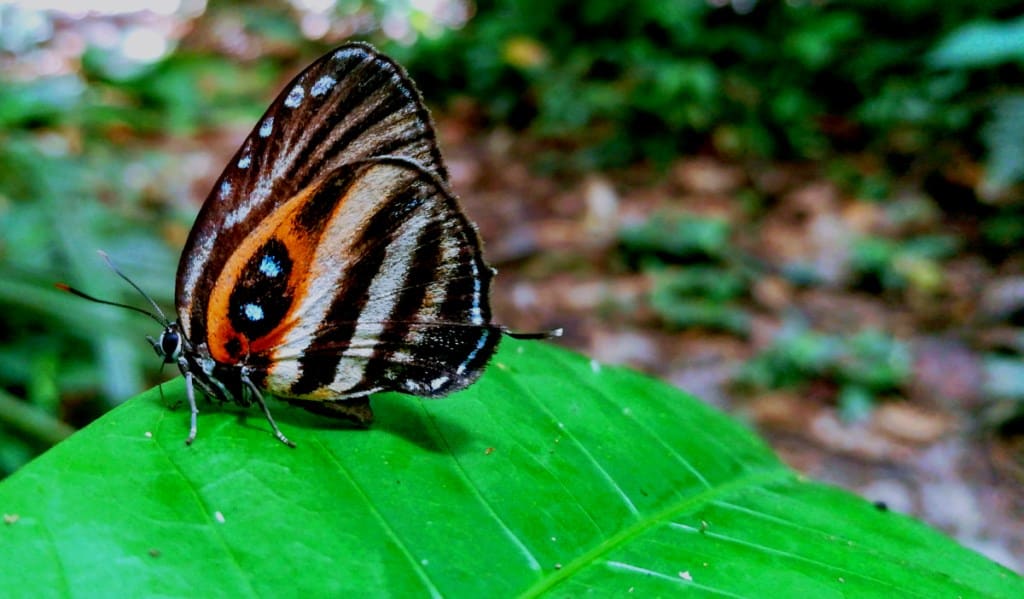
The Riodinidae are members of the Superfamily Papilionoidea, the true butterflies. They typically thrive in tropical latitudes, especially those of the Americas, and approximately 1,300 species are known.
Small to medium in size, metalmarks vary widely in their patterns, behavior, and postures. Males have reduced front legs that are not used for walking, and females have three pairs of walking legs.
Adults usually perch with their wings spread open or cocked slightly, while many tropical species habitually perch upside down on large leaves.
Males locate mates by perching, rather than patrolling. Egg shape varies widely, but caterpillars are typically slug-shaped. Metalmarks overwinter in the larval or pupal stage.
The Pieridae are a large family of butterflies most pierid butterflies are white, yellow, or orange in coloration, often with black spots.
The pigments that give the distinct coloring to these butterflies are derived from waste products in the body and are characteristic of this family.
The sexes usually differ, often in the pattern or number of the black markings.
The larvae (caterpillars) of a few of these species, commonly seen in gardens, feed on brassicas and are notorious agricultural pests.
Males of many species exhibit gregarious mud-puddling behavior when they may imbibe salts from moist soils.
The Papilionidae belong to the Superfamily Papilionoidea, the true butterflies. Swallowtails are worldwide in distribution and comprise approximately 560 species.
They are the richest in the tropics, and their brilliant colors make them the favorites of butterfly enthusiasts.
Many swallowtail species, especially in the tropics, mimic other butterflies that are distasteful, while others are distasteful and cause birds and other vertebrate predators to regurgitate.
Swallowtail adults are medium to large and may or may not have tails, while parnassian adults are medium, tailless, and have translucent wings.
All adult parnassians and swallowtails have three pairs of walking legs, and adults of all species visit flowers for nectar.
Skippers are a family, Hesperiidae, of the Lepidoptera (moths and butterflies). Being diurnal, they are generally called butterflies.
They were previously placed in a separate superfamily, Hesperioidea; however, the most recent taxonomy places the family in the superfamily Papilionoidea.
They are named for their quick, darting flight habits.
Most have the antenna tip modified into a narrow hook-like projection.
More than 3500 species of skippers are recognized, and they occur worldwide, but with the greatest diversity in the Neotropical regions of Central and South America.

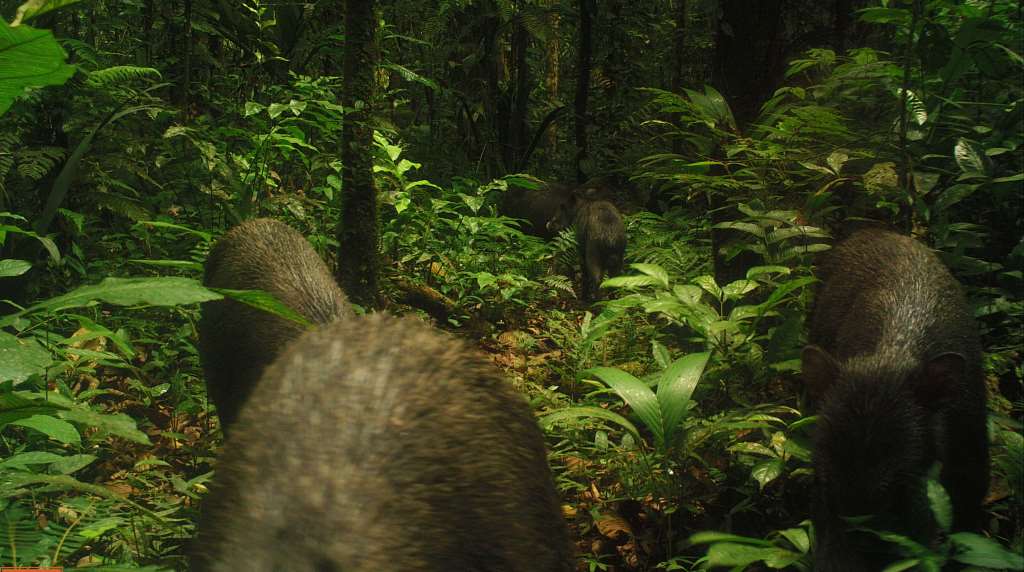

The Amazon Rainforest in Ecuador or “Oriente” is one of the most biodiverse places on the surface of our Planet!
In this post, you will learn 10 amazing facts about the Ecuadorian Amazon Rainforest.

Before we sink into some facts about the Amazon Rainforest in Ecuador, let’s watch a video filmed in Yasuni Biosphere Reserve ( National Park & Waorani Reserve ).
The Yasuni is said to be where Life exploded into millions of forms and shapes it is one of the most diverse ecosystems in the world.
Watch on YouTube via Fernando Vaca
Watch a Video of Yasuni National Park in Ecuador
Watch on YouTube via Fernando Vaca
Now, let’s learn more about the Amazon Rainforest in Ecuador.
The Amazon Rainforest in Ecuador represents only 2% of the Amazon Basin which stretches across 9 countries, Bolivia, Brazil, Colombia, Ecuador, Guyana, French Guiana (Overseas France), Peru, and Suriname.
The Amazon Rainforest takes up only seven percent of the planet’s land mass, yet half the earth’s plant species are found in the Amazon Rainforest.
High net productivity is experienced in birds, mammals, reptiles, and insects, Life flourishes in every corner here.
The following facts focus on the Ecuadorian Amazon Rainforest.
1) There is an incredible number of tree species in the Amazon Rainforest in Ecuador,
Just 62 acres (1/4 of a square kilometer) of the Amazon Rainforest in Ecuador supports over 1,100 species of trees.
That makes it among the highest of any region in the world.
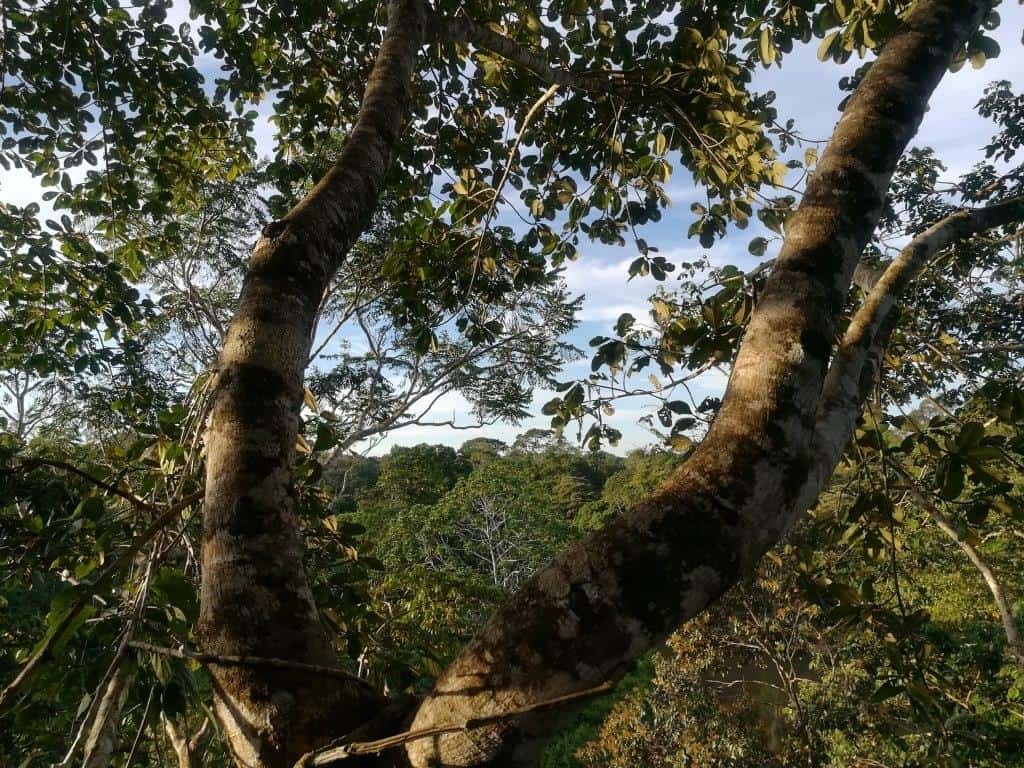
There are more species of trees and bushes in one hectare here than in all of North America!
2) The Amazon Rainforest is the largest region in Ecuador.
There are several Bioregions on mainland Ecuador, the Costa (Coastal lowlands), the Sierra (Andean highlands), and the Oriente (the Amazon).
The Amazon Rainforest in Ecuador covers the eastern portion of the country. It includes six Ecuadorian provinces: Napo, Orellana, Pastaza, Sucumbios, Morona Santiago, and Zamora-Chinchipe.
Amazon Rainforest in Ecuador Map
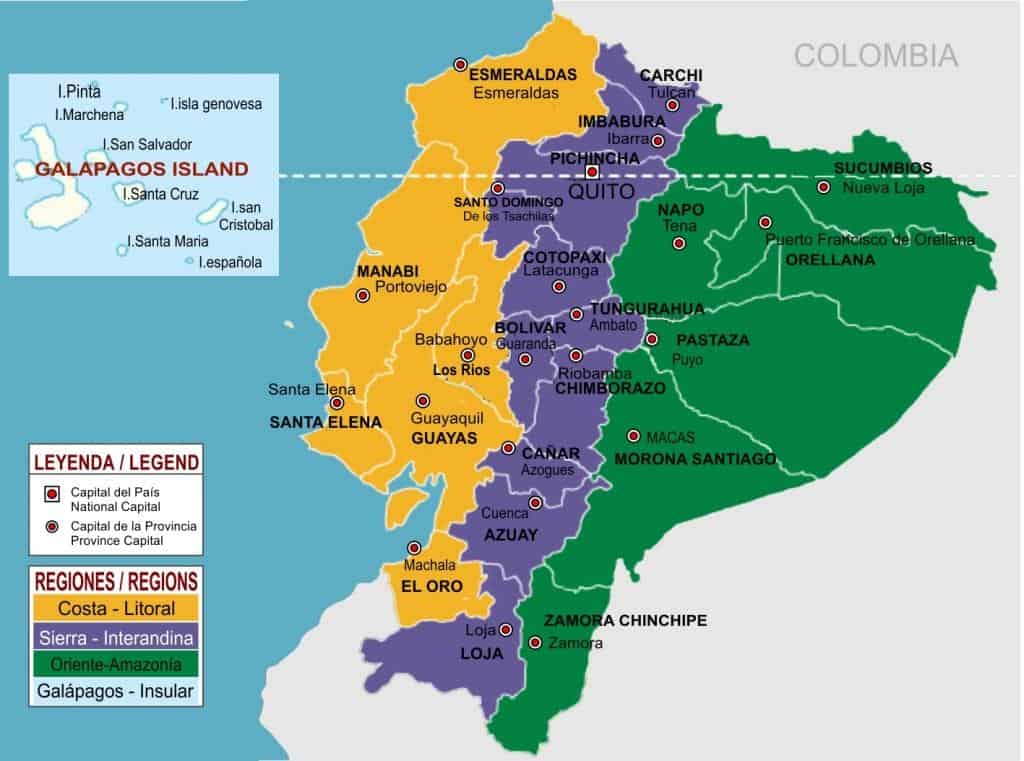
Image Credit – Foros Ecuador
3) The number of animal species found in Ecuador’s Amazon is outstanding.
The Amazon in Ecuador is boasting of animal species with no rivals.
In Yasuni Biosphere Reserve alone there are 150 amphibian species (more than the U.S. and Canada combined), 121 species of reptiles, over 200 species of mammals, over 596 birds, and 382 species of fish.
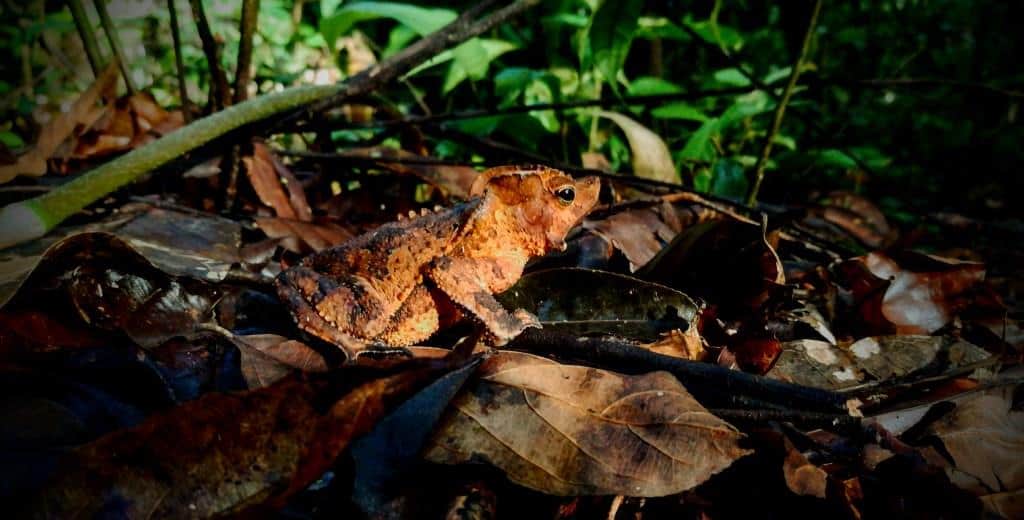
Insects also love the Amazon. Over 70,000 species of insects can be found in one acre of rainforest.

In the following video, you’ll see some of the animals that call the Amazon home.
This video was filmed in Yasuni National Park.
Animals of the Amazon Rainforest in Ecuador Video
Watch on YouTube via National Geographic
4) The Ecuadorian Amazon is a bird watcher’s paradise<span
With over 587 species of birds, the Amazon Rainforest in Ecuador is a birder’s paradise. Birdwatching trips are a huge draw for visitors to this area.
With a knowledgeable guide, you could see around 250 to 300 species during your trip.
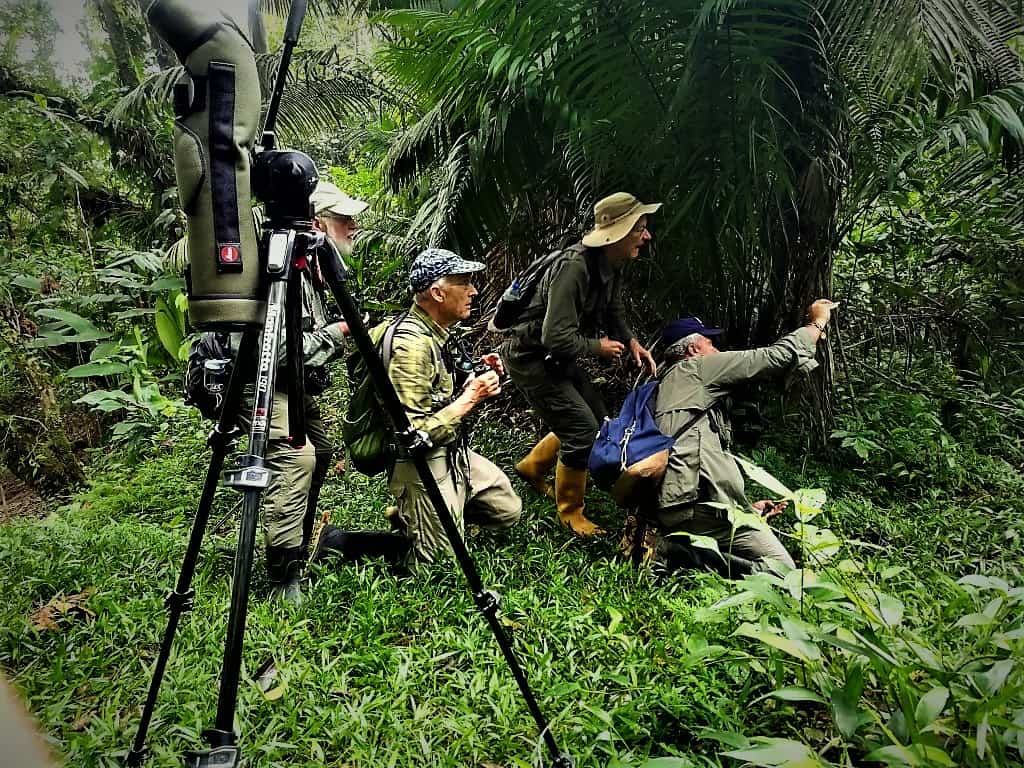
The following video highlights some of the bird species in the Ecuador Amazon.
Birds of the Amazon Rainforest in Ecuador Video
Watch on YouTube via Fernando Vaca
Learn more about Birds of the Amazon Rainforest.
5) There are 4 National Parks in Ecuador’s Amazon Jungle
There are 5 National Parks in the Amazon Rainforest of Ecuador to promote the Conservation of Nature:
Yasuni National Park and Biosphere Reserve are said to be the most biodiverse place on earth. It’s Ecuador’s largest National Park and is a UNESCO World Biosphere Reserve.
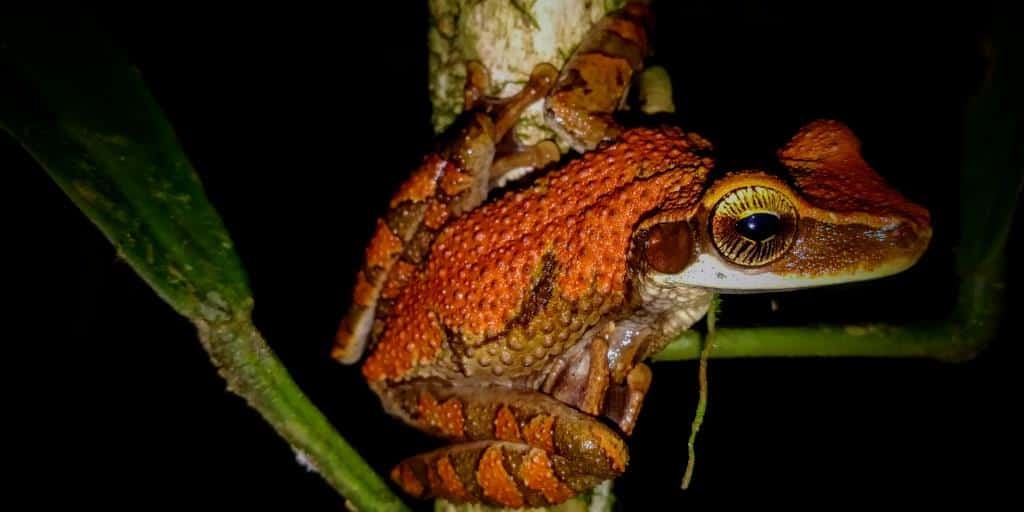
There are other areas such as Cuyabeno Wildlife Reserve, Limoncocha, which provide safe areas for wildlife.
These areas help protect the Amazon and are wonderful places to visit.
The following video was filmed in Yasuni National Park and highlights 28 amazing mammal species in this area.
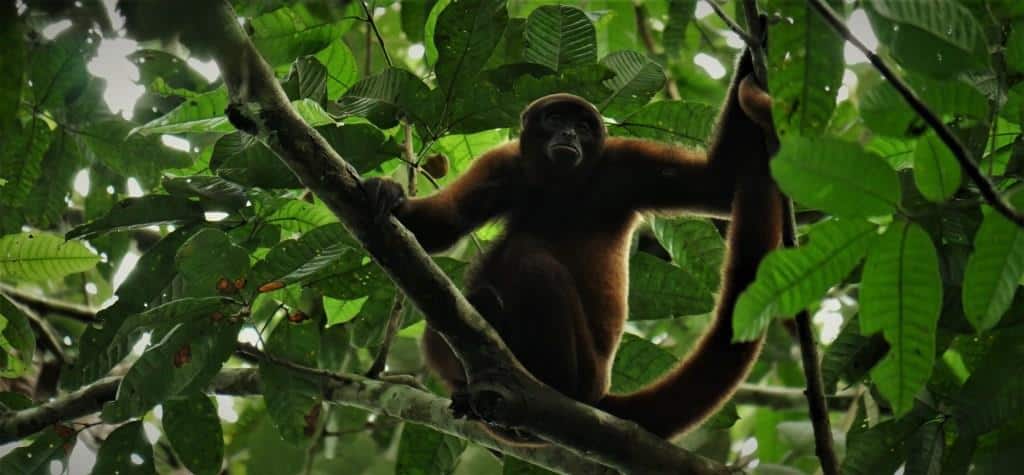
Watch on YouTube via Fernando Vaca
6) There are 7 major cities within the Amazon Rainforest in Ecuador
The seven cities include:
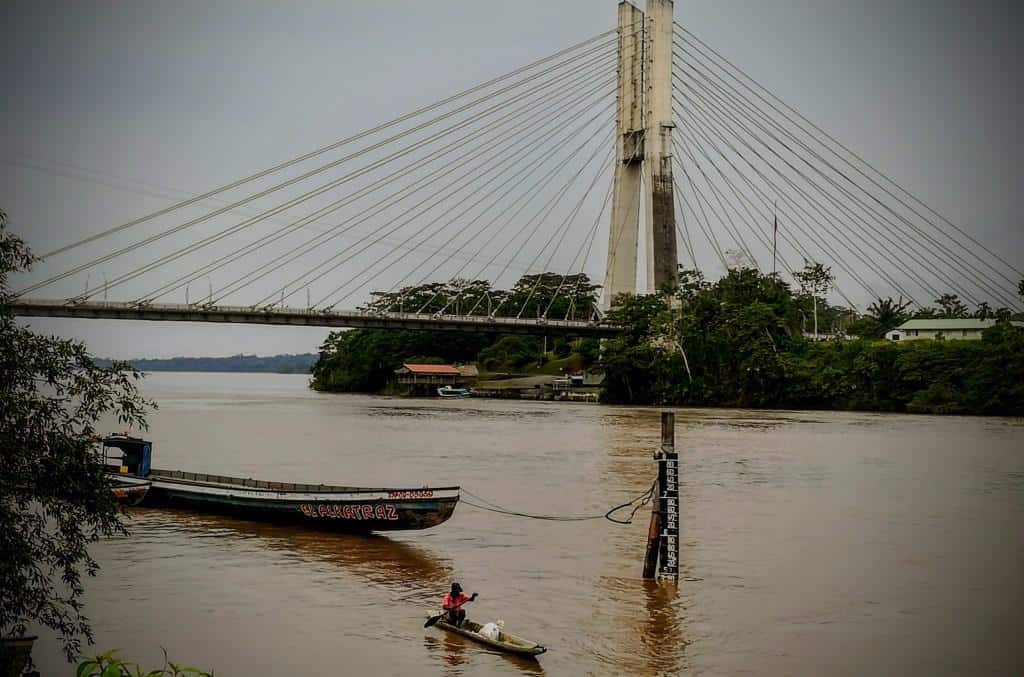
The population in the Ecuadorian Amazon Rainforest is over 739,000, including the cities and six provinces found within the rainforest. There are still large areas in the Amazon Jungle in Ecuador that are uninhabited.
7) There are 9 indigenous cultures in the Amazon
There are 9 indigenous nationalities in the Ecuadorian Amazon: Kichwas, Shuar, Achuar, Shiwiar, Cofán, Siona, Secoya, Zápara, Andoa, and Waorani.
Some of them welcome tourists which is wonderful for family cultural experiences in Ecuador.
Visiting the Amazon Rainforest in Ecuador
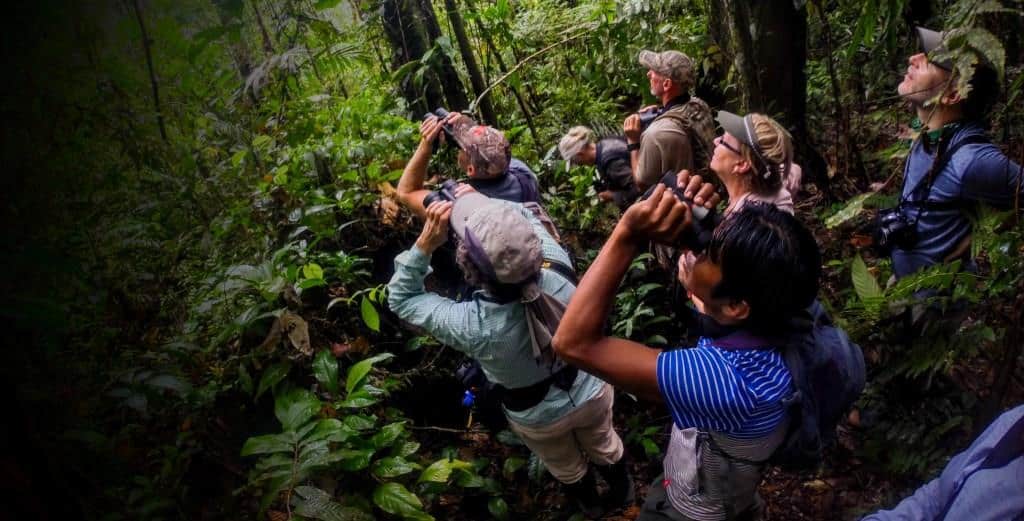
Two tribes (the Tagaeri and Taromenane) who live within the Yasuni National Park choose to live in isolation.
8) The climate is the same year-round
The climate in the Ecuador Amazon is pretty much the same year-round, warm and rainy.
Animals in the Ecuadorian Amazon
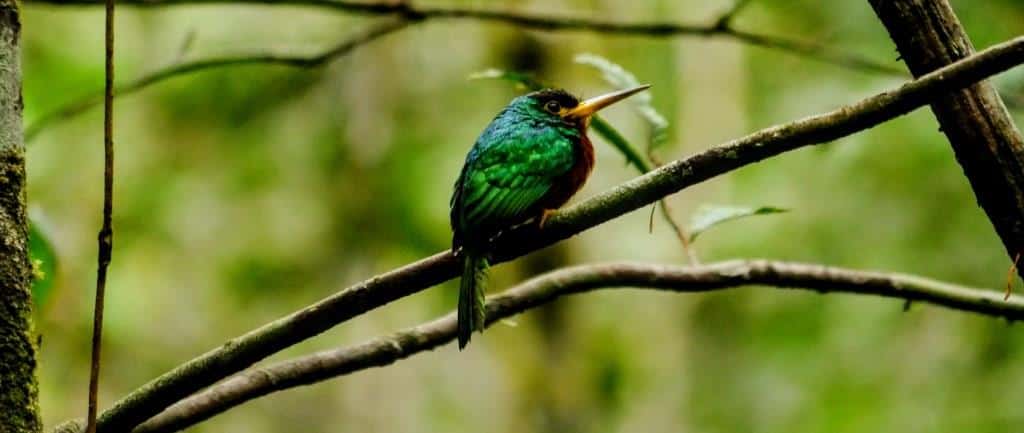
The temperature averages around 28°C (82°F) in the daytime and drops to around 17°C (62°F) at night.
From February to May it experiences the highest rainfall while July through August are the drier months.
The Amazon Rainforest in Ecuador usually receives around 3500 mm of rain every year, so even during the drier months, heavy rainfall can happen at any time.
9) The Amazon River was discovered in Ecuador
The Amazon River was discovered by a Spanish expedition started in Quito in 1541 by an explorer and conquistador named Francisco de Orellana.
He discovered the river in 1542 and initially named it Rio de Orellana.
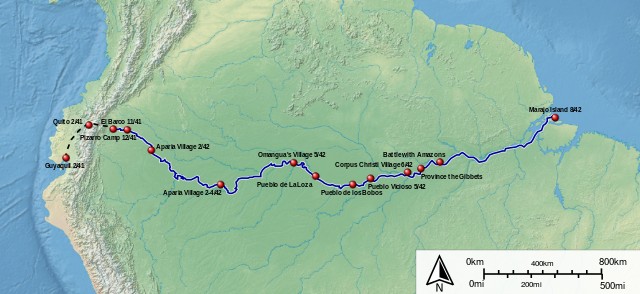
Travel to the Amazon in Ecuador
As he explored he battled with a tribe of Tapuyas. The women of that tribe fought alongside the men. He later named the river after the Amazons – a tribe of women warriors in Greek mythology.
10) The Amazon in Ecuador is threatened. There is a lot of oil (around 800 million barrels) under the Ecuadorian Rainforest.
Extracting it puts the Amazon at risk, including the plants, animals, and way of life for the people that live there.
Deforestation and illegal logging also threaten the area.
Efforts are underway to protect the Amazon Rainforest in Ecuador.
Will You Visit the Amazon Rainforest in Ecuador?
The Amazon is an exciting place to visit. Are you planning a trip?
Have you already visited Amazon?
Please share your thoughts by commenting on this post.

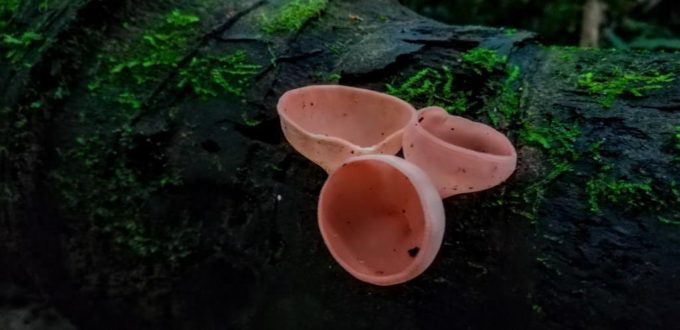
The Fungi or Mushrooms are a phylogenetically diverse group of microorganisms that are all heterotrophic (absorptive nutrition) eukaryotes, unicellular (i.e. yeasts) or hyphal (i.e. filamentous), and reproduce by sexual and/or asexual spores.
The Mushrooms and Fungi from the Amazon Rainforest are essential functional components of the Amazonian ecosystem as decomposers, symbionts, and pathogens and fungi represent one of the most biodiverse groups of organisms on earth.
However, our knowledge of their diversity and ecological function in Neotropical Amazonian Lowland forests is limited.
The ecological interaction of macrofungi with other organisms in these forests is poorly understood due to the largely unexplored, but likely huge, fungal diversity, as well as the cryptic and ephemeral nature of many fungal species.
A major part of the global but unknown fungal biodiversity is assumed to occur in Tropical Regions, where the diversity of fungi may be higher than in temperate regions.
The Amazon Basin is the perfect location if you would like to become a Fungi, the constant humidity combined with heat is the perfect combination for fungi to diversity in the Amazon Basin.
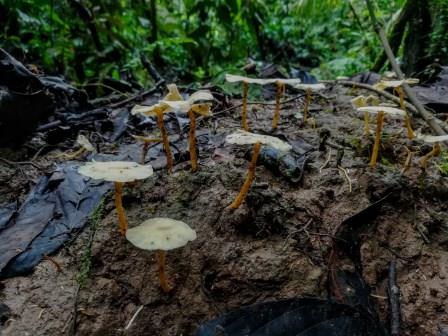
The Mushrooms and Fungi in the Amazon Rainforest play an important role in the ecology of this huge wilderness, these organisms do a critical job of decomposing all kinds of materials from the forest itself.
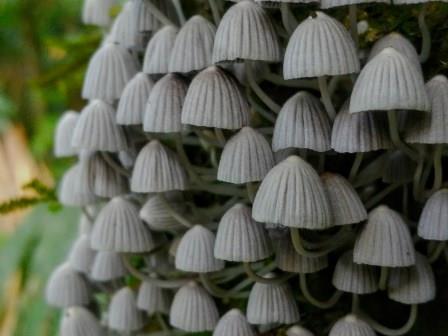
Everything is a resource in the forest, follow this: From an old and finished canopy leaf falling to the ground where the community of mushrooms, fungi, and many invertebrates specialized in turning useful everything to the basic elements of nature: Carbon, Nitrogen, Hydrogen, and Oxygen.
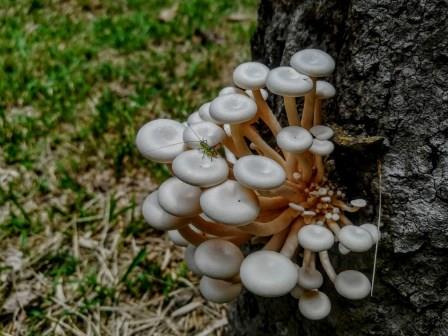
A tiny portion of the colors and shapes of the diversity of Mushrooms and Fungi of the Amazon Rainforest can be found during a short walk on the trails nearby.
Move slowly, fix your looks in the ground, along the trunk, the nearby light gap can be very rewarding, some mushrooms and fungi are still in use by indigenous people to treat, diseases or food in some cases.
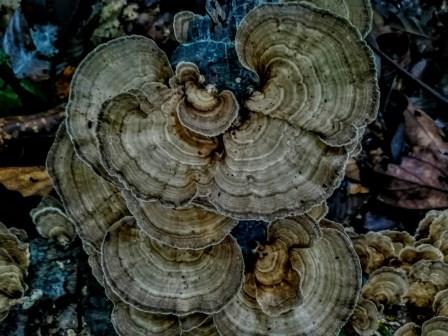
The diversity of Mushrooms and Fungi from the Amazon Rainforest in Ecuador is captured in photos after a short walk around the trails of Shiripuno Amazon Lodge. Enjoy it.
You can find almost everywhere in the forest, here are some locations:
Light Gaps in the forest form predominantly when trees fall by wind and storms. After a few months, we can find a whole series of fungi over time.
Rotting Giant Trees can be a perfect place to watch a timelapse of the different fungi community coming with different fruiting over and over.
The Soil in the Terra Firme habitat is poor by nature in terms of nutrients for life, specialization is the key for those species living in here, many unique Jelly Fungi can be found around
The Soil in the Varzea is a sediment-rich habitat, and species of fungi need to be faster decomposing all the flooded community.
The are many species of Mushrooms and Fungi with territories of more than 10 years!
Have fun finding them in the forest.
The true fungi (kingdom: Mycota) are divided into four divisions:
The family of fungi Ascomycota produces mushrooms that tend to grow in the shape of a “cup”. Spores are formed on the inner surface of the fruit body (mushroom)
-discovered by the British naturalist Alfred Russel Wallace in 1859.
Basidiomycetes mushrooms comprise a diversity of gill fungi that occur in most terrestrial ecosystems worldwide, their diversity and biological applications in tropical ecosystems remain almost unknown.
Some Basidiomycetes species from Amazon tropical rainforests have been described as sources of primary and secondary bioactive compounds with antimicrobial, anti-inflammatory, immunomodulatory, antiparasitic, and antitumoral metabolites and as nutraceutical foods.
In addition, some Basidiomycetes have demonstrated potential as producers of interesting prototype molecules for the development of drugs useful in medicine.
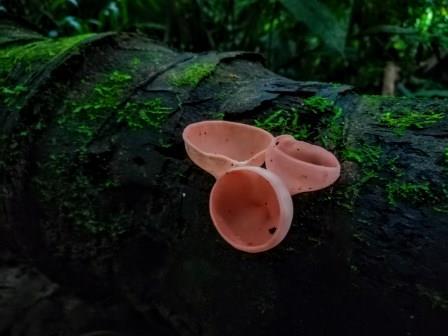

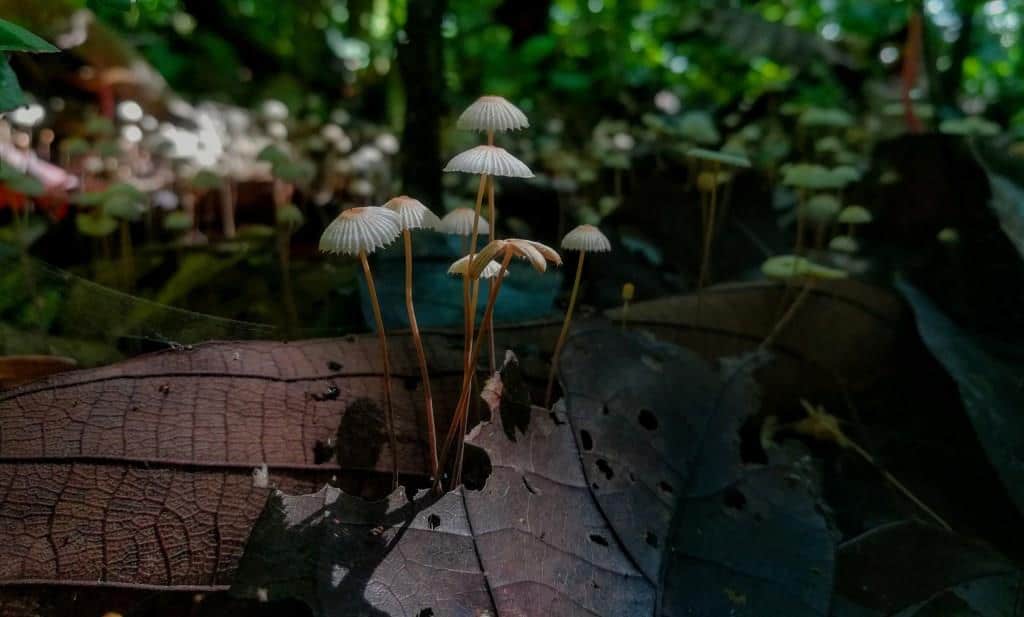
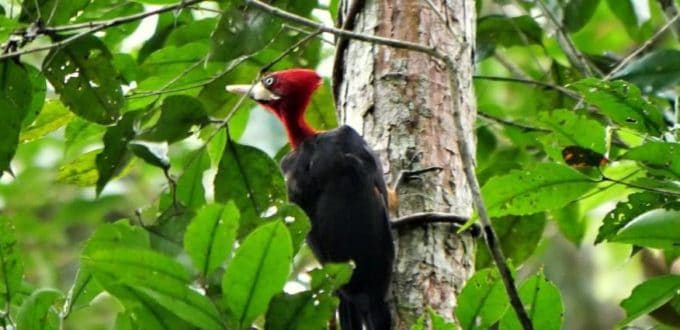
The Birds of the Amazon Rainforest has captivated people’s attention for thousands of years. They are unique in many ways, by its colors like the fantastic Fiery Topaz, Paradise Tanager, Blue-and-Yellow Macaw and many others.
The Amazon Rainforest is home of the many of the largest birds like the Mighty Harpy Eagle, the most powerful Eagle in the world. This Eagle is the top bird hunter of the forest, it prefers arboreal animals such as monkeys and sloths.
The largest Bird of the Amazon Rainforest is King Vulture (Sarcoramphus papa). Reaching length ranges from 67 to 81 cm (26–32 in) and its wingspan is 1.2 to 2 m (4–7 ft). Its weight ranges from 2.7 to 4.5 kg (6–10 lb).
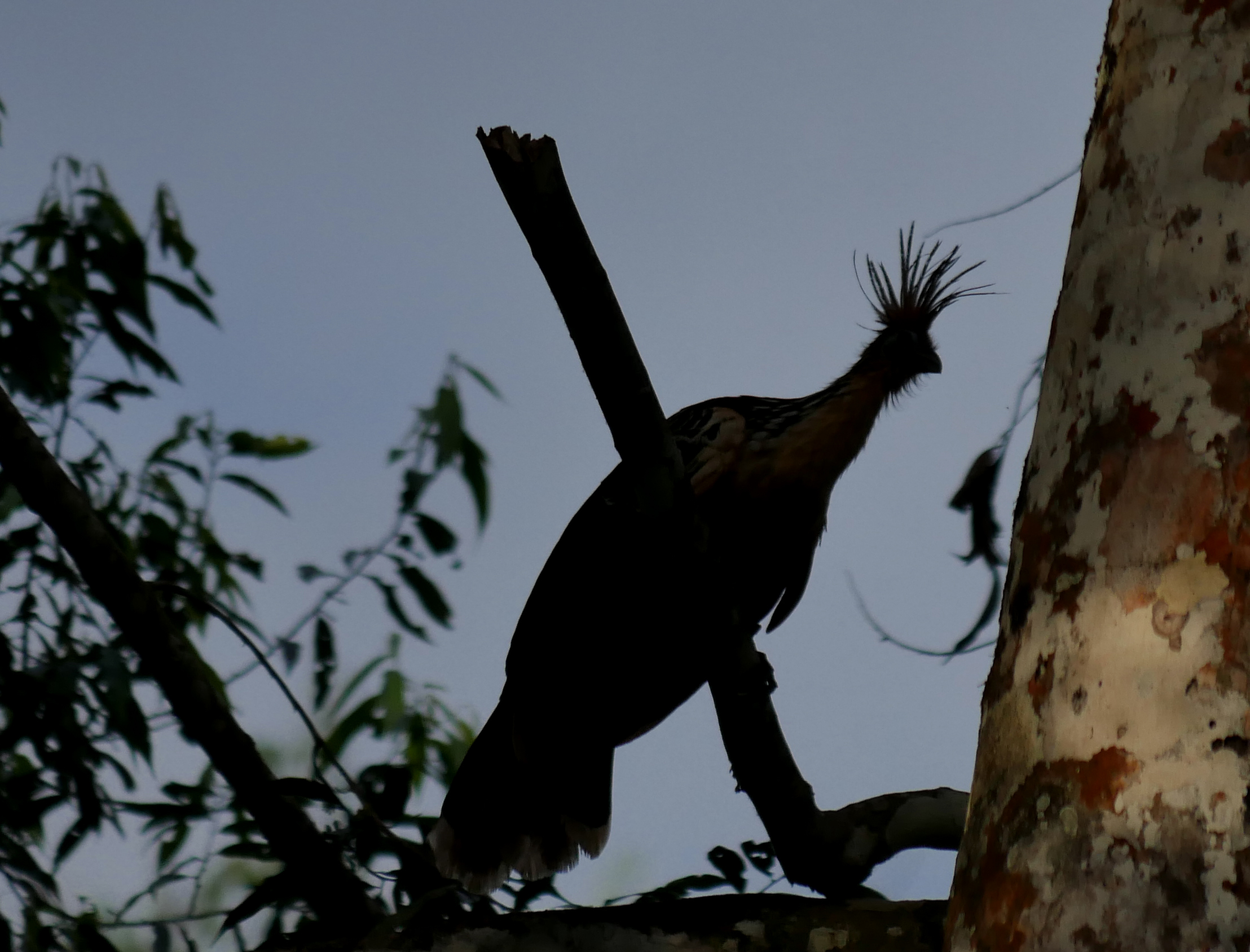
The smallest bird of the Amazon Rainforest is the Short-tailed Pygmy Tyrant (Myiornis ecaudatus) is a flycatcher. The species is one of the smallest birds on Earth and the smallest passerine. The average length is 6.5 cm (2.6 in) and the weight averages at 4.2 g (0.15 oz).
A short walk into the forest and it will start revealing by itself. The Birds of the Rainforest can be seen in the canopy, when they are feeding as they move, picking fruits from figs, bromeliads, anthurium and other. In the canopy lives the toucans, tanagers, puffbirds, flycatchers, and others.
The Birds of the Rainforest living in the ground such as tinamous, wood-quail, curassows, trumpeters are very particular with their voices.
Many species of birds of several families in the Amazon Rainforest travel in groups through the forest, we called mixed species flock. They feed in packs wor a certain area, the advantage of having more eyes to protect the flock while feeding.
The Birds of the canopy of the Rainforest can be found at water sources especially in hot days, plunging in shallow water places.
All thought out the Yasuni Biosphere Reserve there is a series of clay licks inside the forest, named the “Forest Clay Lick”.
Several species of birds such as Macaws, Parakeet, Pigeon, Guans, gather by particular places known as the Clay Lick, they come down to eat clay or drink water. They go down only when all the conditions are perfect!.
In the floor of the Amazon Rainforest, there is a kind of social ants: The Army Ants wanders the forest floor searching for food: insects and other arthropods. Insects fly away from the ant’s swarms. A particular group of birds called the “Professional Antbird” they eat all the insects escaping the ants.
When Amazonian Kingfisher feel empty stomach, they use all the resources at the other end. They defecate in the river water to attract fish. Fish react to all the drops, most of the times are food. Except for this time.
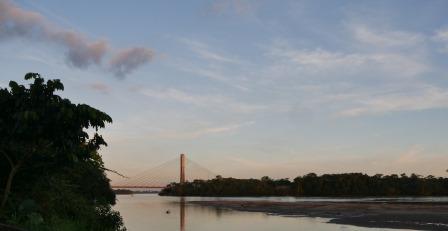
Puerto Francisco de Orellana is surrounded by an impressive access to a variety of iconic Amazonian Wildlife. Many of the most fascinating jungle tours starts in Coca, a cultural melting pot along the Río Napo.
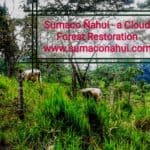
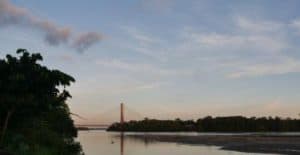
Coca is the last reach of real civilization before the Río Napo transports you deep into the rainforest to the Parque Nacional Yasuní and beyond into the Amazon basin, next big town is iquitos in Peru.
In the 1990s the town was transformed by the oil industry from a tiny river settlement with dirt roads into a hot, teeming mass of concrete.
The capital of the Orellana province since 1999 (and officially known as Puerto Francisco de Orellana),
Coca is trying to start itself up. With a pretty malecón is extending block by block along the riverfront and bars where it’s actually pleasant to enjoy a drink with a stunning new suspension bridge now spans the Napo, taking traffic bound down Via Auca towards the Yasuní Biosphere Reserve.
Check below some of the activities you can do while you are staying in Coca.
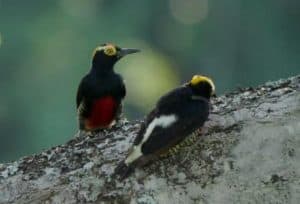
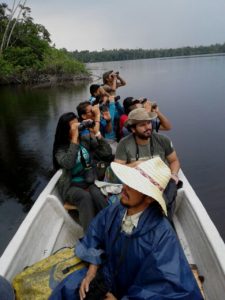
Birding in Coca can be effective in terms of seen variety of species from the Amazon Rainforest in Ecuador. From colorful Tanagers, funny Toucans, elegant Herons, skulking Antbirds, tiny Antwrens, Macaws and many others can be found during a day trip from Coca. Ask for Birding Trips.
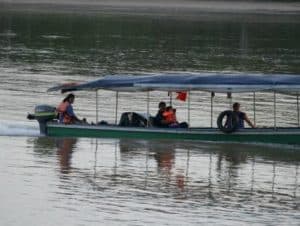
Coca is surrounded by 3 major rivers such as the Napo River, Coca River and Payamino Rivers, all three carry water from the Andes. The duration of the trips depends on the destination and interest you have.
All these rivers have indigenous communities living along their banks, pristine rainforests can be seen from the boats rides and human activities such as oil activities, agriculture, and tourism.
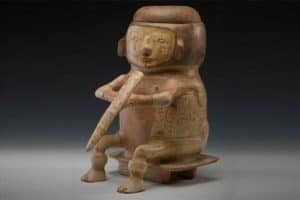
This is the first archeological museum in the region. MACCO Museo Arqueologico Centro Cultural de Orellana. The building was completed in 2015 and was inaugurated on April 30, 2015
MACCO is responsible for disseminating, promoting and rescuing the Amazonian cultural heritage and making it serve the citizens.
MACCO has a permanent archaeological exhibition about the Omaguas, integrated by a collection of more than 300 archaeological objects of the called Napo Stage (1,100-1,500 dc).
OPENING
Monday with reservation 48 hours in advance
Tuesday to Friday from 8:00 a.m. to 5:00 p.m.
Saturdays and Sundays from 10:00 a.m. to 7:00 p.m.
ENTRANCE FEE
National visitors: $ 2.50
Foreign visitors: $ 5.00
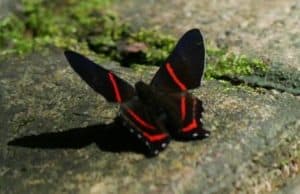
Within 10 minutes boat ride from Coca along the Napo River, you are connected with the Rainforest.
Yasuníland is a theme park of adventure and nature, located in flooded forest in good shape at the moment it offers nice trails with giant Kapok trees and a Canopy Tower great for seeing wildlife and panoramic view of Coca and it surroundings.
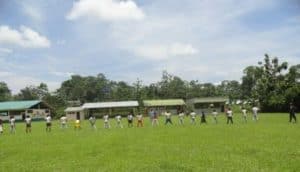
Within 10 minutes boat ride from Coca along the Napo, Coca, and Payamino Rivers, you can visit indigenous communities and visit their start up tourism projects, you can learn about traditional ways of living in the Amazon Rainforest, from farming, cooking, danza, medicine and rituals.
We will add more activities as it arise around. Enjoy it!!


If you are walking through and spot a whip snakes resting on dead branches across the your path, is a signal of the forest is always in motion, sometimes canoeing along rivers or oxbow lakes and catch sight of a giant anaconda coiled, you cannot help but feel excited.
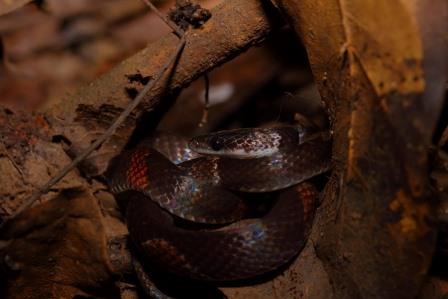
Anacondas are the world’s heaviest snake at around 250 kg. They can grow about 10 metres and have a semi-aquatic lifestyle made possible by the position of their eyes and nostrils on the tops of their head. They seem to choose areas with thick vegetation (grassy areas ), pile of dead logs where they hide. They hunt mainly at night eating most manageable animals like capybara, peccaries and deer. It likes forest streams.
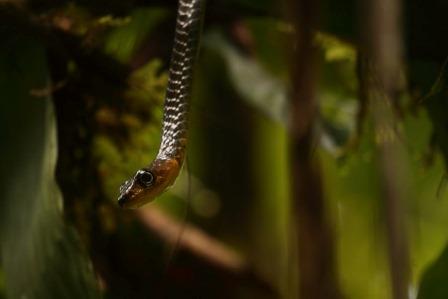
Snakes in this genus (Chironius) are among the most abundant in all South American forests. They include both ground-living and canopy-living diurnal species that mainly prey on frogs but also take lizards and birds.
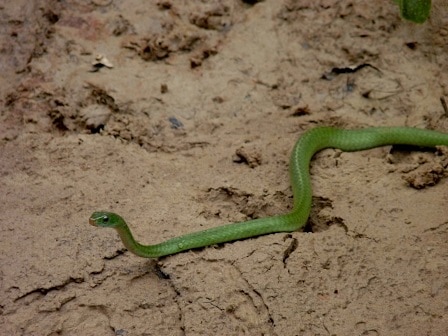
Chironius seeks prey in shrubs and trees. Smart for a snake, there are records of this species investigating bromeliads for their frog prey. Bromeliads collects water making a perfect home for frogs.

Bushmasters are a formidable South American viper and are the largest venomous snake in the western hemisphere. Bushmaster is a very large snake, often exceeding 6,5 ft (2 m) in length. But they can grow to be over 12 ft (3.5 m) making them the longest venomous snake found in the Americas. Strangely for a neotropical pitviper, bushmasters lays eggs as opposed to giving birth to live young.
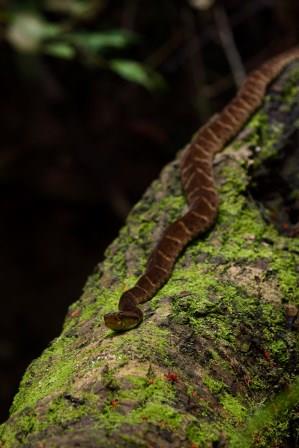
Fer-de lance are nocturnal and solitary. It can be found near rivers and streams, basking under the sun during the day and lying still while well camouflaged in leaf litter or under forest cover waiting to ambush prey (including rats and mice) that comes within range during the night. When cornered or threatened, this species can be very defensive and may exhibit an S-coiled defense display. Juveniles are often semi arboreal and even adults are sometimes encountered in bushes and low trees.
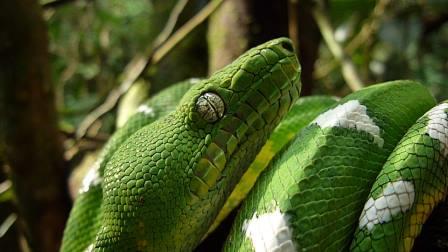
Emerald tree boas live in the trees and blend into the leafy background. They often use their strength to hang from branches and snatch prey like mammals and birds. They have white markings over their body and are locally common in the Amazon Rainforest. Juveniles of this species are reddish orange then mature to a magnificent green.

Rainbow Boas have iridescent scales -it shines at any direction or angle- giving this boa its common name. They feed on birds, lizards, and small mammals found in their range of northern and central South America. Can be found inside leafcutter ants colonies. Rainbow boas are very popular in the pet trade due to their beautiful colouration.
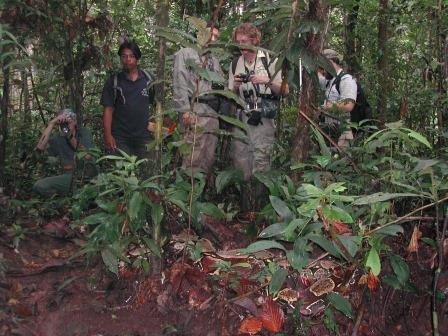
Boa constrictors are a very distinct snake. Their colouration depends on habitat and there are many different subspecies. Although proficient swimmers, they prefer a more land-based lifestyle and seek safety in mammal constructed burrows. Constrictors are dwarfed by their anaconda cousins and grow to around 4 metres in length. Threatening their existence in the wild, boas are hunted for their skins to make various products.
The South American coral snake is a beautifully patterned elapid (member of the Cobra (Elapidae) family. Coral snakes vary widely in their behavior, but most are very elusive, fossorial snakes which spend the vast majority of their time buried beneath the ground or in the leaf litter of a rainforest floor, coming to the surface only when it rains or during breeding season. Some species, like Micrurus surinamensis, are almost entirely aquatic and spend most of their lives in slow-moving bodies of water that have dense vegetation. Coral snakes feed on lizards and other snakes and are highly venomous.
As their name suggests, Amazon Tree Boas live mainly in the trees and are classed as arboreal, but they can come down to the ground at night. Like the emerald tree boas, these snakes are also known to hang from trees to catch passing prey. They have varied colouration from an olive body to orange or yellow.
We will continue adding for species to this post, enjoy it!!